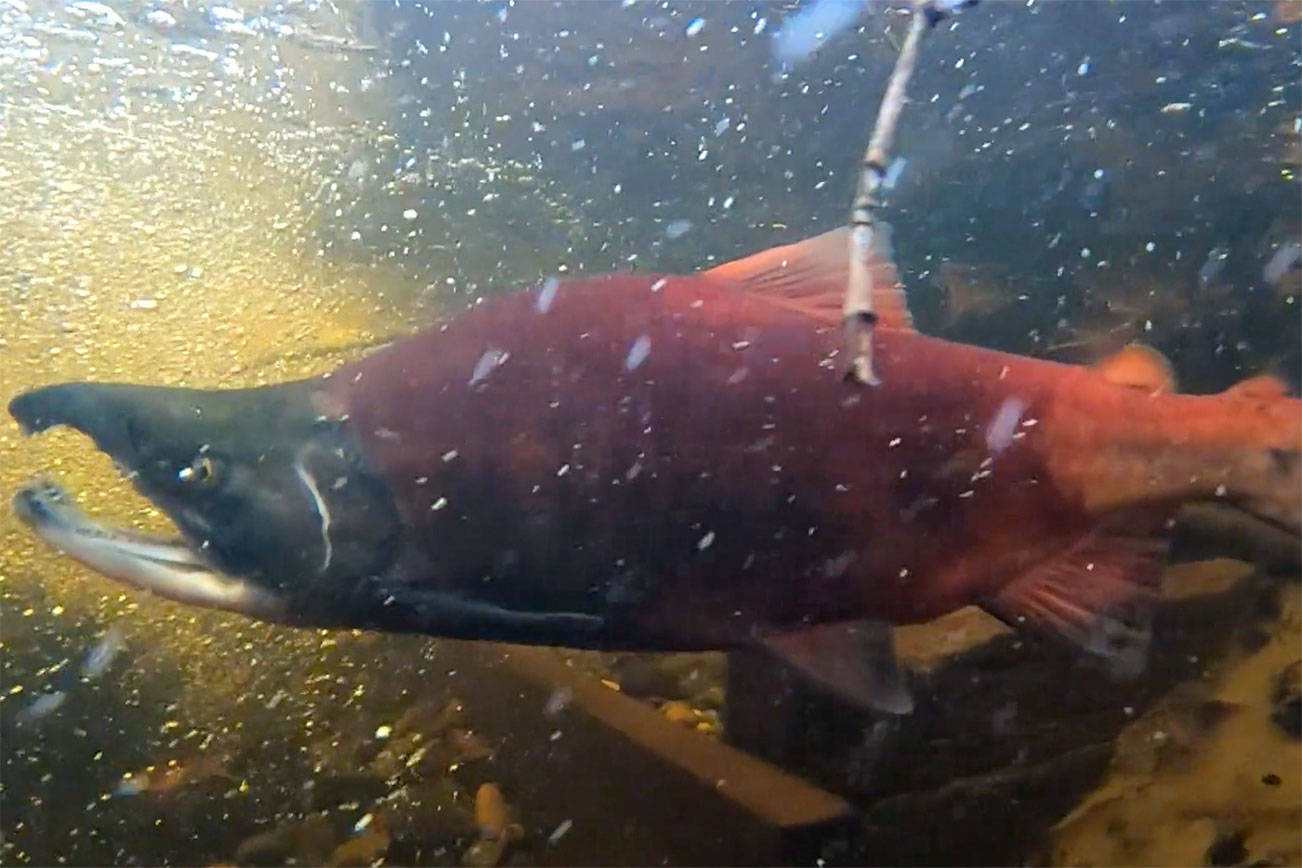Pipes at King County’s jail are breaking down less than a decade after they were installed, pushing the county to spend $23.5 million to repair them. That has sparked a lawsuit alleging the manufacturer of the pipes misrepresented its products, which may have been installed across the country.
Old copper and steel pipe systems at the King County Correctional Facility were replaced beginning in 2012, as part of a Facilities Management Division project. The new pipes were manufactured by Aquatherm Corporation, a German-based company that makes polypropylene-random (PP-R) pipes, which are meant to last decades. But by 2015, the jail’s new piping system had developed several major leaks.
In mid-April 2019, the leaking had become so severe that King County Executive Dow Constantine declared an emergency and waiver, which allowed the immediate repair and replacement of the water system upon approval of $23.5 million in funding from the King County Council. The pipes serve not only inmates and staff at the jail, but also the adjacent 24/7 homeless shelter in downtown Seattle.
King County executive services spokesperson Barbara Ramey released a statement that says the county had filed a product liability and breach of warranty lawsuit in King County Superior Court against Aquatherm, as well as local representatives and the installers of the pipes. The lawsuit was filed on March 20, 2019, and asks that damages be assessed and awarded during the trial.
“The pipes in this critical facility have experienced numerous failures and the county has responded with timely repairs and thorough investigation,” Ramey said.
A trial is scheduled for 2020, and Ramey said the county “intends to vigorously pursue its claims.”
Court documents obtained by this newspaper show that King County, represented by the law firm Harrigan, Leyh, Farmer and Thomsen, is alleging Aquatherm has been purposely misleading customers.
“(The) unfair and deceptive acts were part of a pattern or generalized course of conduct, have been repeated and have the capacity for future repetition, and have injured other property owners in exactly the same fashion as King County,” the lawsuit alleges.
The lawsuit said the jail has experienced and continues to experience damage, unsafe conditions and dangerous failures of its pressurized water system. This newspaper has reached out to several other property owners who may have installed Aquatherm piping within the past decade, as well as lawyers representing both Aquatherm and King County in the lawsuit.
The county alleges it was given seven separate, 10-year warranties, each roughly equal to $17 million, which covered various portions of the jail’s plumbing system. In addition to the German Aquatherm company, its local subsidiaries in several states were named in the lawsuit. Contractors and local plumbing companies including Auburn Mechanical, Wood Harbinger and WG Clark Construction Co. were also named.
King County Council member Kathy Lambert said staff told her the pipes were patched for use during the day and repaired at night. Inmates were provided with bottled water and buckets to flush toilets, and drinking water was stockpiled.
“That was how they handled that, and then they brought in bottled water and buckets,” Lambert said.
Ramey declined to comment further on the jail’s situation, citing the ongoing lawsuit.
The King County Correctional Facility houses more than 1,000 people. In about 2012, the facility had its old hot and cold piping removed, as well as its hot circulating steel and copper piping systems. These were all replaced with PP-R piping.
“The expected life for water pipe infrastructure is significantly greater than eight years. Litigation has been initiated to recover damages related to the system failure,” Constantine wrote in a letter to the King County Council.
Pipes in Puget Sound
Several critical buildings in Puget Sound have installed Aquatherm piping as of 2013, according to a list compiled by CoEngineers. The list includes the King County Correctional Facility, Seattle’s Swedish and Virginia Mason hospitals and the Fred Hutchinson Cancer Research Center. These buildings, as well as Via6 and Cirrus Apartments, were confirmed to have installed Aquatherm piping, according to court documents.
Virginia Mason spokesperson Gale Robinette said their Aquatherm instillation was small and limited to a pressure relief drain line on one floor of the hospital. He said facilities staff had not noticed any problems with it. Swedish’s spokesperson Tiffany Moss said they haven’t had any issues either.
This newspaper has reached out to Fred Hutchinson to see if they have experienced difficulties, and will update this story when more information becomes available. The Park Orchard Elementary School in Kent was included in the CoEngineers list.
In Seattle, the Via6 tower incorporated Aquatherm pipes during construction, which finished in 2013. The project has two 24-story towers and 654 units. By 2018, the building’s management had to remove tenants for a month to replace the piping, according to the Seattle Times. The Times described the building as having been “plagued with major water leaks, flooding and water shutoffs over the past year.” Via6’s owner sued Aquatherm last year in King County Superior Court. Court documents show litigation is ongoing. According to the Times, Aquatherm claimed the problems were the result of improper design and installation.
On top of this, more than 180 projects across the country have installed Aquatherm piping as of 2013, according to another list from CoEngineers. The list includes buildings at Washington State University, military installations in Nevada and the U.S. Capitol Building in Washington, D.C. This newspaper is trying to independently verify several of these listings, and has reached out to locations across the country to see if similar problems have surfaced.
Around 20 years ago, Aquatherm products became available in Australia and soon after started seeing failures, according to an article in the Australian publication Plumbing Connection. These failures seem to have happened in hot water systems that were connected at some point to copper piping or infrastructure, according to reports.
Aquatherm, the publication said, dubbed these failures the “Australian Phenomenon,” and credited them to a cocktail of factors. These included incorrect bracketing, not enough installation consideration for expansion and pressure, and running water through the pipes that was hotter than 70 degrees C (158 degrees F) at high velocities. The publication said installations in Germany have not run into similar problems with the piping.
Dan Robles is the CEO of CoEngineers, a Puget Sound area engineering company that has encountered several PP-R piping installations. Robles said the piping can work well, as shown by its performance in Germany, but that patterns of failure seen in Australia may be emerging in the U.S.
“It’s got a few vulnerabilities, and if you’re not aware of those vulnerabilities, then they can conspire to fail the parts,” Robles said.
The first is exposure to copper ions, which can create oxidization in the pipes. Second, if a clamp securing the pipe is putting too much pressure on it, this can stress the material. Finally, high velocity or high temperature water that is pumped through the pipes can further stress them further.
“If you have all three of those things happening at the same time, you’re probably going to have some problems,” he said.
According to the Plumbing Connections article, failures were not noticed in cold water systems at the time in Australia, and PP-R was developed more than 40 years ago. Large amounts of copper ions were being found inside the hot water PP-R pipes exposed to copper ions when tested. This copper seemed to deplete the pipe of stabilizing chemicals and would lead to stress cracking. Copper pipes are also vulnerable to their own set of problems, including pitting.
Aquatherm and Wilson, Smith, Cochran, Dickerson, the legal firm representing it in the King County lawsuit, had not returned requests for comment at the time of publication.
Update: Without water 16 times
Inmates, staff and residents of the homeless shelter at the King County Correctional Facility have been without water 16 times within the past year and a half following significant failures in the piping system.
The county’s downtown Seattle jail, housing more than 1,000 inmates, has experienced ongoing system failures with its Aquatherm pipes, which were installed in 2012 and marketed as having a 60-year lifespan. However, by 2015, the jail’s water service was regularly interrupted by major leaks that left everyone in the building without water. When major leaks happened, the entire system would be shut down to make repairs, said King County’s director of facilities management Anthony Wright.
“It kept failing and probably for the first five or 10 [leaks], we were negotiating with the manufacturers and they were covering them under warranty,” Wright said at a July 23 county budget and fiscal management meeting.
In the face of ongoing leaks, the county filed a lawsuit against the German-based manufacturer Aquatherm this spring, at which point the company stopped providing repair services. Since then, the county has secured another contractor for repair work. King County Executive Dow Constantine is asking for $23.5 million to completely overhaul the jail’s piping system and for the county to declare an emergency. This ordinance will appear on the July 24 King County Council agenda.
Some leaks have caused damage to flooring and cabinets as well as drip damage and, in some cases, flowing water. One picture presented at the meeting showed 180-degree temperature water jettisoning from a pipe onto a mechanical panel.
“When it’s doing that, we have to shut the water down to the system,” Wright said. “The whole complex either lacks cold water or hot water or both, depending on which pipe has failed.”
These failures left inmates, visitors and everyone else in the building reliant on using bottled water for drinking, flushing toilets and other essential uses at times. While the water system was shut down when large leaks broke out, Wright said the leaks on their own could create pressure loss on the upper floors of the buildings. In previous coverage, King County Council member Kathy Lambert said most repair work was done at night.
Wright said the jail has around 4.5 miles of piping that will need to be replaced, likely with a stainless steel system. There is no timeline for when it could be completed. And while the county is asking for $23.5 million, Wright said the total project cost may come in under budget.
King County sued Aquatherm in March to recover damages associated with replacing the system and damage to the facilities. The lawsuit, which names Aquatherm and several of its U.S. subsidiaries, as well as local contractors, alleges the problems are not unique to the jail.
“(The) unfair and deceptive acts were part of a pattern or generalized course of conduct, have been repeated and have the capacity for future repetition, and have injured other property owners in exactly the same fashion as King County,” according to the lawsuit.
Aquatherm pipes are made from a material called polypropylene-random (PP-R), which Wright said usually works well in places that have hard water unlike Seattle.
The Seattle Times reported in 2018 that the Via6 apartment project installed Aquatherm pipes during construction that had been deemed complete in 2013. The apartment complex has two, 24-story towers and 654 units. By 2018, the building’s management displaced tenants for a month to replace the piping after major water leaks and flooding. The building’s owners sued Aquatherm last year and litigation is ongoing.
The Edith Green-Wendell Wyatt Federal Building in Portland also installed Aquatherm pipes in recent years following renovations that were completed around 2013. By summer 2018, the federally-owned building began experiencing leaks, said property manager Chad Hutson with the General Services Administration (GSA).
“GSA is currently investigating the root cause for leaks with the assistance of the third-party consultant with the goal of permanently correcting the issue,” Hutson said in an email.
If the emergency ordinance is declared by the King County Council, the county could begin the process of replacing the pipes at the correctional facility immediately.









